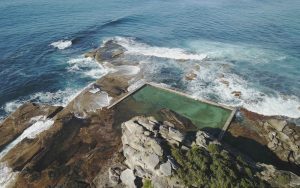IPCC again used the “burning embers” diagram to highlight levels of concern that scientists have about the consequences of climate change. These diagrams are expressed as levels of increased risk with temperature rise; they also offer an indicator of confidence of transition from one level to another. For each major theme and for each broad region they graphically highlight key areas of concern.
One area of concern that caught my eye is found in the Technical Summary on page 29. For Australasia there is recognition of “failure of institutions and governance systems to manage climate risks”. Interestingly, the Summary for Policymakers (p.17) does not show a glowing ember for this level of concern.
While the creation of a new federal recovery and resilience agency with a disaster risk reduction framework is a positive step, it is but a small step in overcoming the many barriers that exist in Australia addressing both the challenges of adaptation and the threats of maladaptation. Important as it is, there still in no national adaptation strategy that embraces all three levels of government in a coherent, inclusive way that will address the “enabling condition” set out in the policymakers summary for implementing, accelerating, and sustaining adaptation in human systems and ecosystems (SMP C.5).
My experience in working across all three levels of government In Australia (and the natural resource entities) reveals disconnects in political commitment, policy consistencies, bureaucratic silos, staff capacities, inadequate financial support, and struggles in communicating and sharing of information. Coordination and integration in decision-making are objectives frequently subverted by institutional practices that go back decades.
By way of example, I am currently tasked to chair group under a NSW Government initiative to improve the management of waterway health of Sydney Harbour. This includes consideration of issues arising from climate change and involves working with five government agencies and 20 local councils that encompass the catchment of Greater Sydney Harbour. There is no single entity or even process to manage that iconic waterway in association with waters that discharge from its catchments. This work requires an assessment of what governance requirements are best to implement any adaptation strategy that this city will need in the future in waterway management.
Looking more broadly, the IPCC notes that our cities are exposed to the cascading impacts of climate change with a 2-degree warming that will create considerable hardship for many. The burden of addressing such hardships rests to a large degree with local governments. They are constrained in so many ways to meet these challenges. There are big differences in capacity of local councils both within and between states. Huge fiscal imbalances exist as well as technical capacities to address on-going let alone long-term challenges.
What is the way forward? In adaptation terms we cannot continue to follow the incremental pathway which we appear to be on at present. There is a need to be “transformative”. This is a huge ask, but what is the alternative given roles and responsibilities under current institutional arrangements? Organisations such as the Insurance Council are calling for major investment by governments to mitigate disaster risk yet I cannot see how that would work unless there is alignment in planning across all three levels of government. It is not just adaptation to adverse impacts of extreme events, but also for incremental effects such as those resulting from sustained coastal inundation due to sea level rise.
To achieve better integration there is clearly need for a national commitment to strategic regional planning inclusive of governments and purpose. It must be at a scale than can manage programmatic funding over a time period that enables effective mitigation action (including where needed the purchase of property at severe risk of harm). This will involve agreement between the Commonwealth and states to enact common legislation to establish a regional framework with consistency in form and function, including a defined role for local government.
A regional model existed during the days of Natural Heritage Trust Mk.2. However, successive federal governments lost interest in creating a permanent national system to support Natural Resource Management (NRM) regions. Such a model would not meet all the challenges of climate change adaptation. We have to do much better than this. Now is the time to rethink governance arrangements to address all that IPCC has put before us otherwise the pathway to “climate resilient development” will be unachievable.
Bruce Thom AM, FTSE
Wentworth Group of Concerned Scientists
Words by Prof Bruce Thom. Please respect the author’s thoughts and reference appropriately: (c) ACS, 2022. For correspondence about this blog post please email austcoastsoc@gmail.com
#211



 Recent federal coastal initiatives – February 2022
Recent federal coastal initiatives – February 2022